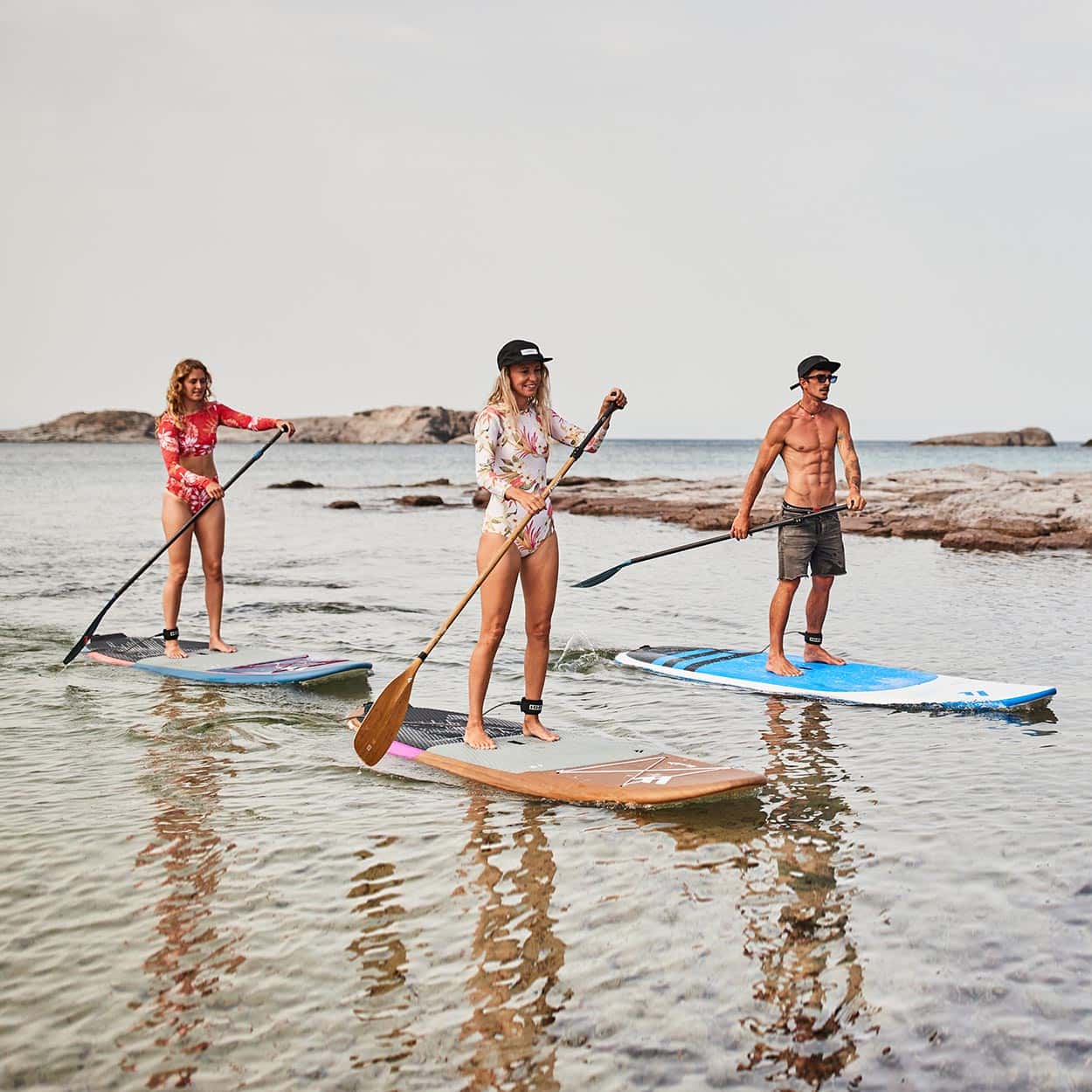Whether a coiled or straight leash is better for your paddleboard depends on your personal preference and the type of paddling you'll be doing.
A straight leash is a simple, straight line that connects you to your paddleboard. Straight leashes are usually lighter and less cumbersome than coiled leashes, and they allow you to move freely around the board without getting tangled up. Straight leashes are better for flat water paddling, touring, and racing, where you don't need to worry about the leash getting caught on anything.

A coiled leash, on the other hand, is a leash that has been designed to retract back into a coiled shape, similar to a telephone cord. Coiled leashes are usually thicker and heavier than straight leashes, but they offer more freedom of movement because the leash is shorter and retracts when not in use. Coiled leashes are great for surfing or whitewater paddling, where you need the leash to be short and not drag in the water, but you also need to be able to move around on the board.
Ultimately, the choice between a coiled or straight leash comes down to personal preference and the type of paddling you'll be doing. If you'll be paddling in flat water or doing long-distance touring, a straight leash may be a better choice. If you'll be surfing or paddling in whitewater, a coiled leash may be a better option. Regardless of which leash you choose, always make sure to wear a leash when paddle boarding to stay safe and secure in the water.
Both ankle leashes and waist leashes can be safe options for paddle boarding, but they each have their own advantages and disadvantages.
Ankle leashes attach to your ankle and keep the board attached to you in case you fall off. They are generally recommended for flat water paddling and touring, as they are less likely to get caught on anything in the water. Ankle leashes can be less comfortable than waist leashes, as they can restrict your movement and can pull on your ankle if you fall off the board. However, they are also less likely to cause injury if the leash gets caught on something in the water, as they are not as long as waist leashes.
Waist leashes attach to your waist or belt and keep the board attached to you in case you fall off. They are generally recommended for surfing and whitewater paddling, as they are less likely to get caught on anything in the water and can give you more freedom of movement on the board. Waist leashes can be more comfortable than ankle leashes, as they don't restrict your movement as much. However, they can be longer and are more likely to get caught on something in the water, which can cause injury if you get pulled underwater or dragged along by the board.
Ultimately, the choice between an ankle leash or a waist leash comes down to personal preference and the type of paddling you'll be doing. Both types of leashes can be safe and effective when used properly. It's important to always wear a leash when paddle boarding to stay safe and secure in the water.
Have any questions while choosing which boards right for you? Or need advice on where to ride? Give us a call and we’ll talk you through the all the options, let us help you choose which sup will be best for your needs. Email / Phone or pop ion the old fashion way
You won't be able to dismiss this by usual means (escape or click button), but you can close it programatically based on user choices or actions.